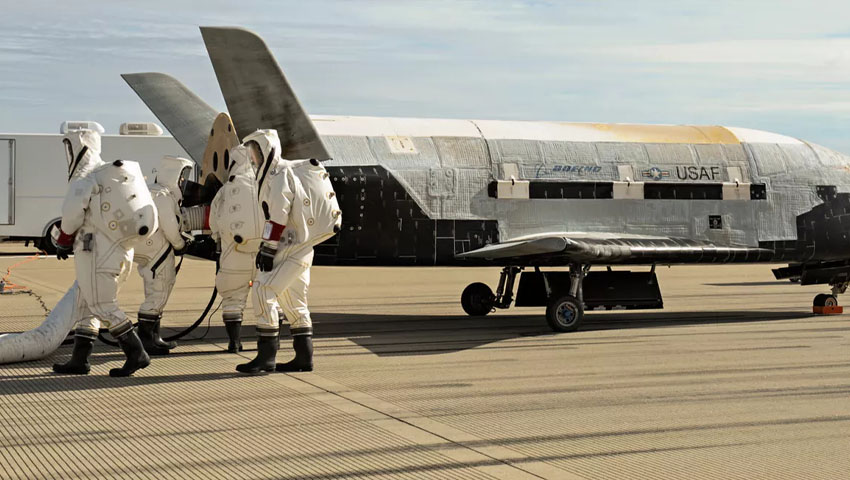The US Air Force’s top secret robotic X-37B spaceplanes haven’t made that many flights but they’ve been crackers.
The latest X-37B mission ended this week with the space plane touching down at NASA’s Kennedy Space Center Shuttle Landing Facility after 780 days in space.
That’s more than two years. The previous longest fight was 717 days by the same aircraft. The USAF has just two operational X-37B spaceplanes, which have conducted five missions with 2,865 days in space since the start of the first mission in April 2010.
“The X-37B continues to demonstrate the importance of a reusable spaceplane. Each successive mission advances our nation’s space capabilities,” said USAF Secretary Barbara Barrett.
USAF Chief of Staff, General David Goldfein said the safe return of this spacecraft, after breaking its own endurance record, was the result of the innovative partnership between government and industry.
“The sky is no longer the limit for the Air Force and, if Congress approves, the US Space Force,” he said.
What’s called the orbital test vehicle (OTV) started out as a NASA project in 1999, with Boeing selected to perform development of what was called X-37A at its Phantom Works.
This subsequently transferred to the US Department of Defense, with the US Air Force subsequently developing its own version called X-37B.
One X-37A was made and two X-37Bs, with length of nine metres, wingspan of 4.5 metres and maximum take-off weight of just under five tonnes.
X-37B resembles a scaled down space shuttle. It’s launched by rocket, most recently aboard a SpaceX Falcon 9, and, like the space shuttle, glides in to land.
“This program continues to push the envelope as the world’s only reusable space vehicle. With a successful landing today, the X-37B completed its longest flight to date and successfully completed all mission objectives,” said USAF Rapid Capabilities Office Director Randy Walden.
“This mission successfully hosted Air Force Research Laboratory experiments, among others, as well as providing a ride for small satellites.”
What the USAF doesn’t talk much about is just what X-37B is actually doing out there.
There’s been plenty of speculation about what X-37B does out there, including serving as a spy satellite and keeping an eye on China’s Tiangong-1 space station module.
It has certainly conducted experiments with new types of drive and sensor systems.
The sixth X-37B mission is planned for second quarter next year.

